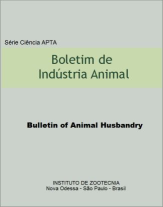Robotic milking of dairy cows: a Review
DOI:
https://doi.org/10.17523/bia.v73n1p80Keywords:
automation, dairy cattle farming, robot, precision livestock farmingAbstract
An innovative technology that currently tries to gain market share are milking robots. Despite the high costs, robotic milking may produce benefits for the farmer and for animals submitted to this system. The objective of this study was to perform a literature review on the use of robotic milking of dairy cows, addressing aspects such as implementation and functioning of the system and effect on milking frequency, milk production and composition, somatic cell count, mastitis, reproduction, and animal welfare. The results showed that the programming of the robot depends on the number of animals to be milked daily and on the milking frequency adopted in each batch. The implementation of the system mainly depends on the site where the facilities will be built and already existing structures on the farm. The milking frequency is higher for high-producing cows and at the beginning of lactation and is influenced by the palatability of the concentrate offered at the time of milking. Frequencies higher than three times per day reduce total milk fat production and increase the concentration of free fatty acids. The incidence of mastitis and somatic cell count tend to increase in the first three months after implementation of the system. After the second year, udder health tends to improve, normalizing mastitis incidence and somatic cell count. Reproduction of the cows is not affected if dry matter intake compensates the higher energy expenditure required for higher milk productions. Robotic milking improves cow welfare since the animals voluntarily turn to the robot when they feel discomfort.Downloads
Downloads
Published
Issue
Section
License
Os autores não serão remunerados pela publicação de trabalhos, pois devem abrir mão de seus direitos autorais em favor deste periódico. Por outro lado, os autores ficam autorizados a publicar seus artigos, simultaneamente, em repositórios da instituição de sua origem, desde que citada a fonte da publicação original seja Boletim de Indústria Animal. A revista se reserva o direito de efetuar, nos originais, alterações de ordem normativa, ortográfica e gramatical, com vistas a manter o padrão culto da língua e a credibilidade do veículo. Respeitará, no entanto, o estilo de escrever dos autores. Alterações, correções ou sugestões de ordem conceitual serão encaminhadas aos autores, quando necessário. Nesses casos, os artigos, depois de adequados, deverão ser submetidos a nova apreciação. As opiniões emitidas pelos autores dos artigos são de sua exclusiva responsabilidade. Todo o conteúdo deste periódico, exceto onde está identificado, está licenciado sob a Licença Creative Commons Attribution (CC-BY-NC). A condição BY implica que os licenciados podem copiar, distribuir, exibir e executar a obra e fazer trabalhos derivados com base em que só se dão o autor ou licenciante os créditos na forma especificada por estes. A cláusula NC significa que os licenciados podem copiar, distribuir, exibir e executar a obra e fazer trabalhos derivados com base apenas para fins não comerciais.













